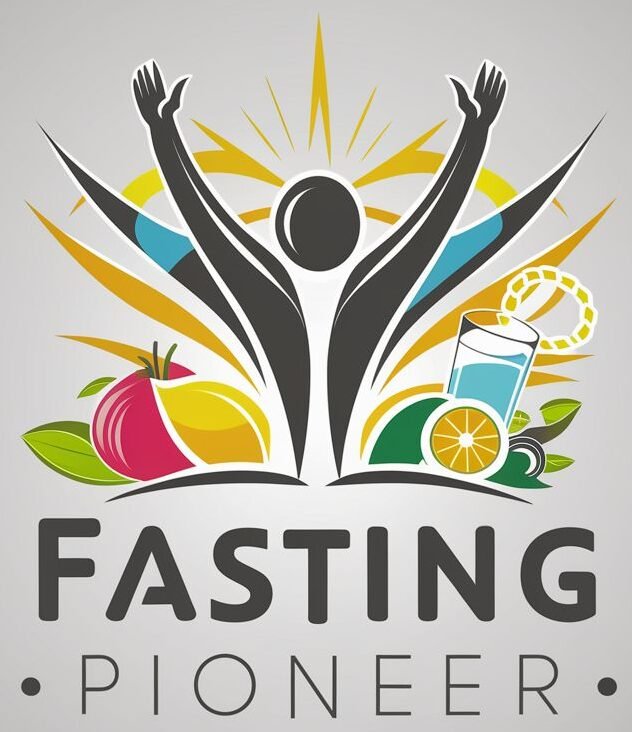You’ve probably heard about the benefits of both fasting and exercise for your health, but have you ever considered combining the two? In this article, we will explore the intriguing concept of fasting and exercise, and how you can do it safely. Whether you’re looking to shed some pounds, improve your metabolic health, or simply want to experiment with new ways to challenge yourself physically and mentally, fasting and exercise may be worth exploring. However, it’s important to approach this combination with caution and proper guidance to ensure you reap the benefits without compromising your well-being. So, let’s dive into the world of fasting and exercise, and discover how you can make the most of this powerful duo while keeping yourself safe.

Understanding Fasting and Exercise
What is fasting?
Fasting is the practice of voluntarily abstaining from consuming food and drinks for a specific period of time. It has been practiced for centuries for religious, cultural, and health purposes. During a fast, the body is deprived of calories and enters a fasting state, utilizing stored energy sources for fuel.
What is exercise?
Exercise refers to physical activity that is planned, structured, and repetitive. It is performed to improve or maintain physical fitness, health, and overall well-being. Exercise can range from aerobic activities such as running or swimming, to strength training exercises with weights or resistance bands.
Why combine fasting and exercise?
Combining fasting and exercise can have synergistic effects, enhancing the benefits of both practices. When fasting, the body’s glycogen stores become depleted, leading to increased reliance on stored fat for energy. By incorporating exercise during fasting, you can further stimulate fat burning and optimize body composition.
Benefits of Combining Fasting and Exercise
Increased fat burning
When you combine fasting and exercise, the body becomes more efficient at utilizing stored fat for energy. During a fasted state, insulin levels decrease, which promotes lipolysis and enhances fat oxidation. Engaging in exercise while fasting can further deplete glycogen stores, forcing the body to rely on fat as the primary energy source.
Improved insulin sensitivity
Fasting and exercise both contribute to improved insulin sensitivity. Insulin is a hormone that helps regulate blood sugar levels. When you fast or exercise, the body becomes more responsive to insulin, allowing for better utilization of glucose and improved overall metabolic health.
Enhanced muscle growth and repair
While fasting, the body increases its production of human growth hormone (HGH), which plays a crucial role in muscle growth and repair. By combining fasting with exercise, you can further stimulate HGH release, leading to enhanced muscle growth, strength, and recovery.
Potentially increased longevity
Emerging research suggests that combining fasting and exercise may have anti-aging effects and potentially increase longevity. Fasting triggers cellular repair processes and activates autophagy, a natural detoxification and regeneration mechanism. Regular exercise has also been linked to longevity and a decreased risk of chronic diseases.
Boosted brain function
Fasting and exercise can positively impact brain health and cognitive function. Fasting has been shown to promote neuroplasticity, improve memory, and protect against age-related cognitive decline. Exercise increases blood flow and oxygen delivery to the brain, stimulating the release of neurotransmitters that enhance mood, focus, and cognitive performance.
Precautions and Considerations
Consult with a healthcare professional
Before embarking on any fasting or exercise regimen, it is crucial to consult with a healthcare professional. They can assess your individual health status, address any underlying medical conditions, and provide personalized guidance to ensure your safety and well-being.
Choose appropriate fasting and exercise methods
There are various fasting and exercise methods available, and it is important to choose those that are appropriate for your needs and lifestyle. Some individuals may benefit from intermittent fasting, while others may prefer alternate day fasting or extended fasting. Similarly, the choice of exercise should be based on your fitness level, preferences, and any restrictions or limitations.
Listen to your body
It is essential to listen to your body and pay attention to its cues. If you feel weak, lightheaded, or experience any unusual symptoms during fasting or exercise, it may be a sign to modify your approach. Pushing through discomfort or overexerting yourself can lead to negative consequences, so always prioritize your safety and well-being.
Stay hydrated
Proper hydration is crucial when fasting and exercising. Even though you may not be consuming food, it is important to drink an adequate amount of water to maintain hydration levels. Dehydration can lead to fatigue, dizziness, and impaired performance, so be sure to drink water regularly throughout the day.
Avoid overexertion
While combining fasting and exercise can offer numerous benefits, it is important to avoid overexertion. Pushing yourself too hard or engaging in intense workouts during a fasted state can increase the risk of injuries or negatively impact recovery. Gradually increase exercise intensity and duration to allow your body to adapt and prevent overexertion.
Consider your individual health status
Individuals with specific health conditions or medical concerns should take additional precautions when combining fasting and exercise. Pregnant or breastfeeding women, individuals with diabetes, eating disorders, or other medical conditions should seek guidance from their healthcare provider to ensure their safety and well-being.

Types of Fasting
Intermittent fasting
Intermittent fasting involves alternating periods of fasting and eating within a specified timeframe. Common methods include the 16/8 method, where you fast for 16 hours and eat within an 8-hour window, or the 5:2 method, which involves eating normally for 5 days a week and restricting calorie intake for 2 non-consecutive days.
Alternate day fasting
Alternate day fasting involves fasting every other day, where one day is a regular eating day and the next day is a fasting day. On fasting days, a limited amount of calories may be consumed, usually around 25% of regular calorie intake.
Extended fasting
Extended fasting refers to periods of fasting that exceed 24 hours. It can range from several days to weeks, depending on individual goals and health status. Extended fasting should be approached with caution and under the guidance of a healthcare professional.
Time-restricted eating
Time-restricted eating involves consuming all daily calories within a specific timeframe. The most common approach is to restrict eating to an 8 to 10-hour window, such as eating from 10 am to 6 pm and fasting for the remaining hours.
Types of Exercise
Aerobic exercises
Aerobic exercises, also known as cardiovascular exercises, increase heart rate and improve cardiovascular fitness. Activities such as running, cycling, swimming, or dancing can be performed during fasting and provide numerous health benefits.
Strength training
Strength training involves resistance exercises that build muscle strength, size, and endurance. This can include weightlifting, bodyweight exercises, or using resistance bands. Combining strength training with fasting promotes muscle growth and can be effective for body composition improvements.
High-intensity interval training (HIIT)
HIIT involves short bursts of intense exercise followed by periods of rest or lower-intensity activity. HIIT workouts are time-efficient and can be done in a shorter duration, making them suitable for individuals with limited time. However, due to the high intensity, it is important to listen to your body and adjust accordingly when combining HIIT with fasting.
Yoga and stretching
Yoga and stretching exercises promote flexibility, balance, and relaxation. These low-intensity activities can be beneficial during fasting as they help improve blood circulation, reduce muscle tension, and enhance overall well-being.
Combining Fasting and Exercise
Start slowly and gradually increase
When combining fasting and exercise, it is important to start slowly and gradually increase your activity level. Allow your body to adapt to the fasting state and incorporate exercise gradually to avoid overexertion or undue stress on your system.
Listen to your body’s hunger cues
During fasting, it is essential to listen to your body’s hunger cues. If you feel excessively hungry or weak, it may be necessary to modify the intensity or duration of your exercise. It is important to strike a balance between your caloric needs and energy expenditure.
Optimal timing for exercise during a fast
The timing of exercise during a fast can vary depending on your goals and preferences. Some individuals may prefer exercising towards the end of a fasting period, while others may find it more beneficial to exercise during the eating window. Experiment with different timings to find what works best for you.
Adjustments for different fasting methods
Different fasting methods may require adjustments in exercise intensity and duration. For example, during extended fasts, it may be necessary to reduce exercise intensity or opt for low-intensity activities to conserve energy. Consider the specific requirements of your chosen fasting method and modify your exercise routine accordingly.
Meal Planning and Hydration
Well-balanced meals for energy
When combining fasting and exercise, it is important to consume well-balanced meals that provide adequate energy and nutrients. Prioritize lean protein sources, whole grains, healthy fats, and a variety of fruits and vegetables to support your exercise performance and recovery.
Timing of meals and exercise
The timing of meals and exercise can impact your performance and energy levels. If you plan to exercise during your eating window, consider having a small, nutritious meal or snack around an hour before your workout to provide fuel. For those exercising during a fast, it is important to schedule your meals strategically to ensure proper nourishment before and after exercise.
Importance of hydration during fasting and exercise
Proper hydration is vital during fasting and exercise to support performance, prevent dehydration, and encourage optimal recovery. Drink water regularly throughout the day, and consider incorporating electrolyte-rich beverages or foods to replenish essential minerals lost through sweat.
Supplementation
Importance of proper nutrient intake
When combining fasting and exercise, it is essential to ensure proper nutrient intake to support your body’s needs. While a well-balanced diet should provide most of the necessary nutrients, some individuals may benefit from targeted supplementation, especially if following a restrictive eating pattern or experiencing nutrient deficiencies.
Considerations for vitamins and minerals
Certain vitamins and minerals play crucial roles in exercise performance and recovery. It is important to ensure adequate intake of vitamins such as B vitamins, vitamin D, and vitamin C, as well as minerals like magnesium and potassium. Consult with a healthcare professional or registered dietitian to determine if supplementation is necessary based on your individual needs.
Protein supplementation for muscle repair and growth
Protein is important for muscle repair, growth, and recovery. While fasting, it may be challenging to consume adequate protein solely through food sources. Protein supplementation in the form of shakes or bars can be a convenient way to meet your protein needs, especially after exercise sessions.
Monitoring and Assessing Progress
Tracking exercise performance and intensity
Keeping track of your exercise performance and intensity can help monitor progress and make adjustments as needed. Log your workouts, record weights lifted, distances covered, or time spent exercising to have a measurable way to assess your progress over time.
Measuring body composition
Monitoring changes in body composition can provide valuable insight into the effectiveness of your fasting and exercise regimen. Measurements such as weight, body fat percentage, and waist circumference can be tracked periodically to determine if you are achieving your desired body composition goals.
Monitoring overall health and well-being
In addition to tracking physical performance and body composition changes, it is important to monitor your overall health and well-being. Pay attention to energy levels, mood, sleep quality, and any changes in your overall health. If you notice any negative effects, it may be necessary to modify your fasting or exercise routine accordingly.
Conclusion
Combining fasting and exercise can be a safe and effective approach to enhance fat burning, improve insulin sensitivity, stimulate muscle growth, potentially increase longevity, and boost brain function. However, it is crucial to approach fasting and exercise with an individualized mindset, seeking guidance from healthcare professionals, and listening to your body’s cues. By choosing appropriate methods, staying hydrated, consuming well-balanced meals, and monitoring progress, you can optimize the benefits of combining fasting and exercise in a safe and sustainable manner. Remember, your body is unique, so make adjustments accordingly and prioritize your well-being throughout your fasting and exercise journey.






